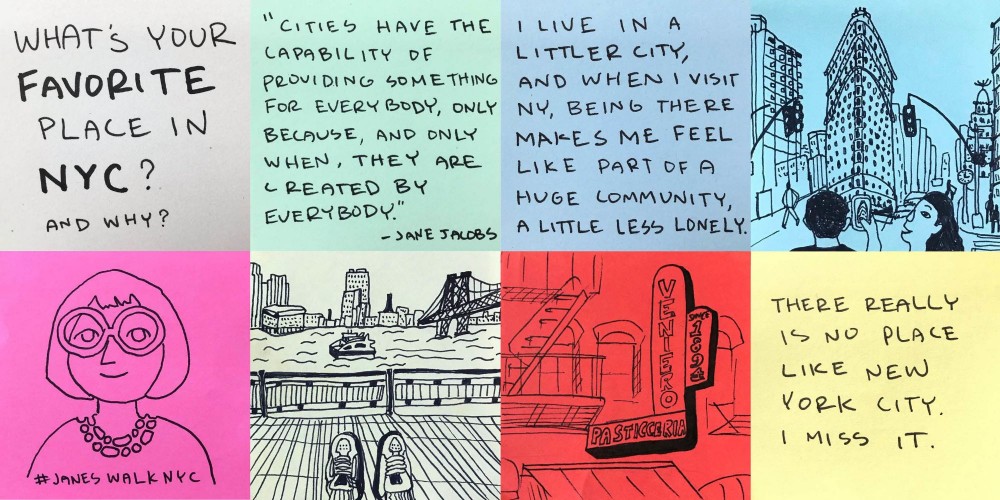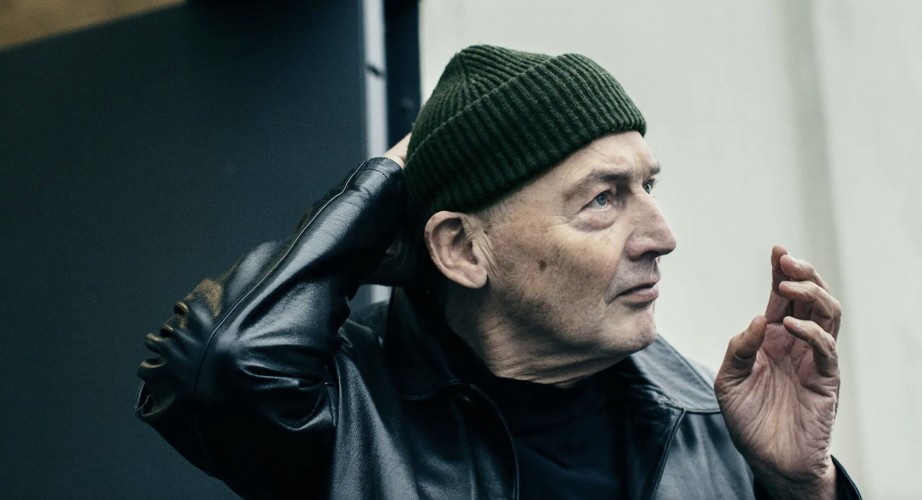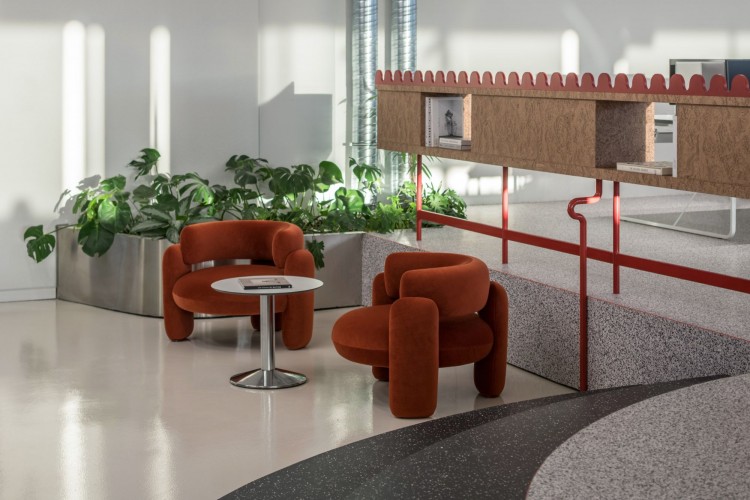Φιλόλαος: Μεταξύ γλυπτικής και design
DS.WRITER:
Σοφία Θρουβάλα
Κεντρική Εικόνα: Philolaos Tloupas (1923-2010) Large screen, circa 1970, Steel | Πηγή εικόνας: magenxxcentury.com
Με αφορμή την επετειακή έκθεση της P gallery | sculpture, που παρουσιάζει μακέτες του Φιλολάου (Τλούπα), ξεκινά μια ανασκόπηση του έργου του. Ο Φιλόλαος, γνωστός με το μικρό του όνομα (όπως ο Θόδωρος), ήταν ένας σπουδαίος γλύπτης, ο οποίος, θα λέγαμε, ασχολήθηκε με τις έννοιες του “συλλεκτικού design / σχεδιασμού” και της “λειτουργικής (functional) γλυπτικής”, πολύ πριν εμφανιστούν και εδραιωθούν ως όροι. Γεννημένος στη Θεσσαλία, φεύγει για τη Γαλλία όπου και μένει για όλη του τη ζωή, αποκτώντας μια καριέρα γεμάτη δημιουργικότητα και πειραματισμούς, ενώ παράλληλα διατηρεί στενές επαφές με την Ελλάδα η οποία ήταν για αυτόν ησυχαστήριο και έμπνευση.
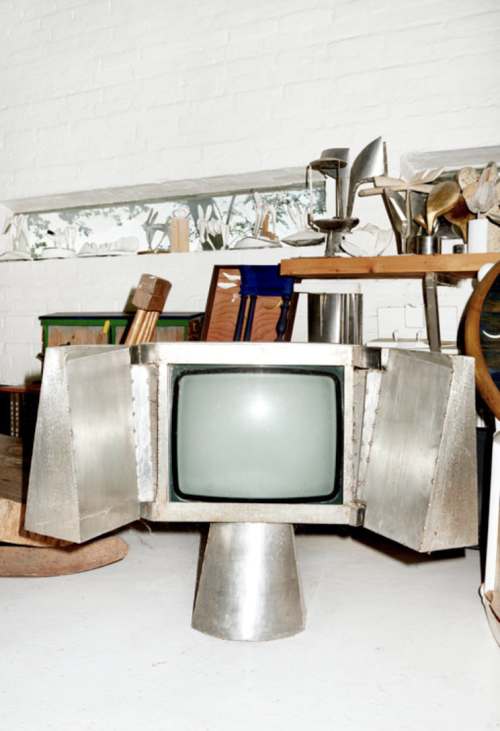
Πηγή εικόνας: communedesign.tumblr.com
Βασικό χαρακτηριστικό του έργου του Φιλολάου είναι η απέραντη και ατέρμονη περιέργειά του να εξερευνήσει και να τιθασεύσει κάθε υλικό, μελετώντας τις ιδιότητές του σε τέτοιο βαθμό, που η ζωή του θα μπορούσε να χωριστεί με βάση την κάθε ξεχωριστή “εμμονή” του στην εκάστοτε υλικότητα. Στη διάρκεια της δεκαετίας του ‘50 ξεκινά να δουλεύει εντατικά με τον μόλυβδο, ενώ η αδυναμία του υλικού να φτάσει σε μεγάλες κλίμακες τον οδήγησε στην “ανακάλυψη” του σιδήρου με τον οποίο τον αντικατέστησε, ξεκινώντας έτσι μια ιστορία “πάθους” με τις διάφορες ποσότητες και ποιότητες μετάλλων, σε κάθε κλίμακα, μορφή, αλλά, κυρίως, χρήση.
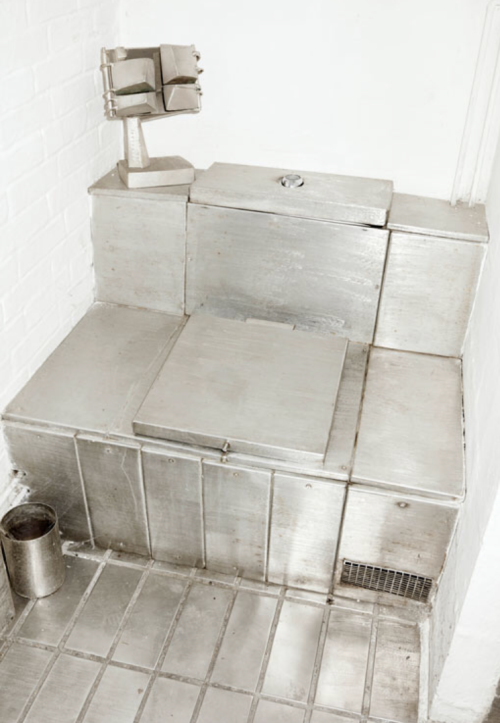
Πηγή εικόνας: communedesign.tumblr.com
Το 1958, χτίζει “από το μηδέν” το ατελιέ και σπίτι του στον Βόλο και στη Saint-Rémy-lès-Chevreuse στη Γαλλία, βασισμένος σε δικά του σχέδια τα οποία απεικονίζουν μια προσωπική του ουτοπία, γεμάτη ασβέστη στην περίπτωση του Βόλου, μέταλλο στην περίπτωση του Σαιν Ρεμί, φως και νερό, στοιχεία που ενώνουν όχι μόνο τη δουλειά του αλλά και τις δυο καταγωγές του (Ελλάδα-Γαλλία). Και στα δύο οικήματα, τα οποία είναι εξ ορισμού πολύ διαφορετικά μεταξύ τους, κι αυτό γιατί αφορμάται κάθε φορά από το “πολιτιστικό” τοπίο αλλά και τη χρήση που θα έκανε ο ίδιος στο κάθε εσωτερικό, σχεδιάζει και υλοποιεί με τα χέρια του κάθε λεπτομέρεια, κάθε έπιπλο, κάθε αντικείμενο της καθημερινότητάς του, φτιάχνοντας τελικά ένα ολικό έργο.
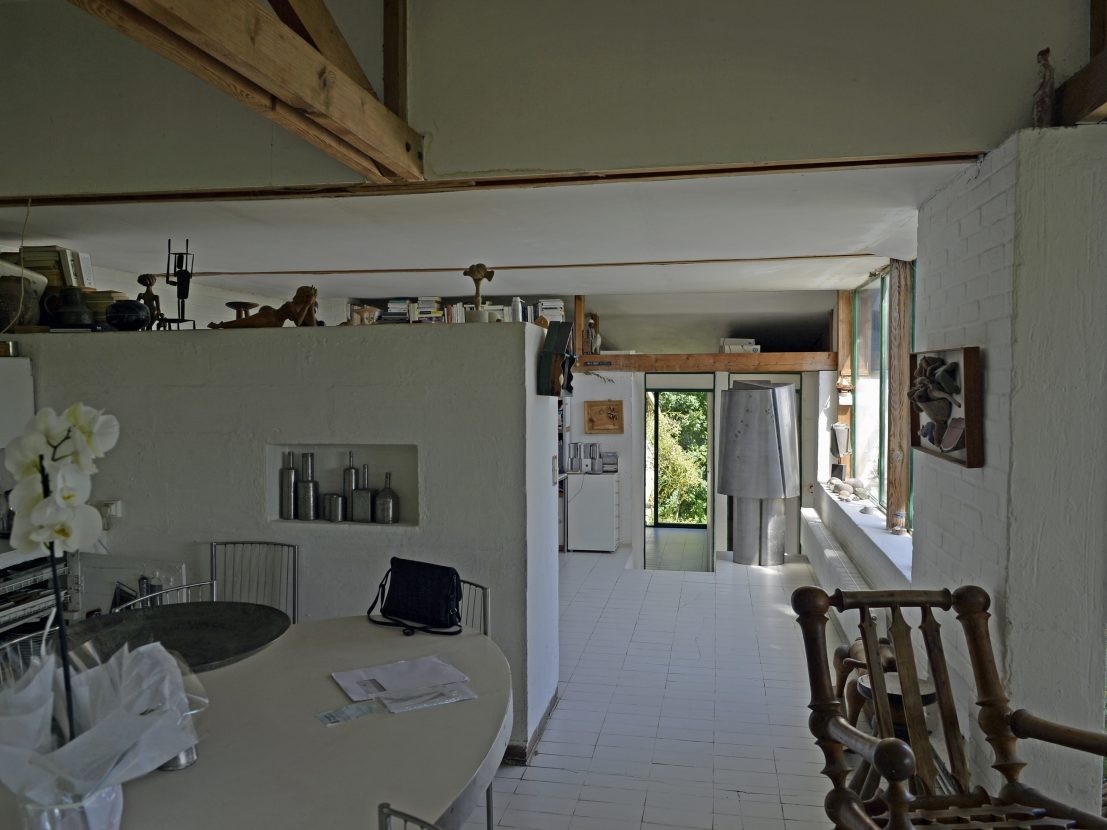
Φωτογραφία: Alkis Voliotis | Πηγή εικόνας: hellenicdiaspora.org
Από τις εμβληματικές καρέκλες και την ντουλάπα τηλεόρασης μέχρι την ανεπανάληπτη ανοξείδωτη τουαλέτα, τα μαγειρικά σκεύη και το εξίσου απαραίτητο σύνθετο, στους ασβεστωμένους τοίχους του Βόλου -αναφορά στο ελληνικό τοπίο- και τη γυάλινη οροφή στη Γαλλία -αναφορά στις κλασικές γαλλικές σοφίτες-, ο Φιλόλαος σκέφτεται, επινοεί, επιμελείται και δημιουργεί χώρους, αντικείμενα και τις σχέσεις μεταξύ τους. Στην πρώτη έκθεση για τα έπιπλα του γλύπτη (στο Château du Val Fleury, 2021) με τίτλο «sculptures à vivre» (γλυπτά για να ζήσεις -μαζί-), η οποία ολοκληρώθηκε το 2021, εκτέθηκαν πάνω από 100 αντικείμενα και πολύτιμα σχέδια από τα προσωπικά αρχεία του γλύπτη. Τόσο από την έκθεση όσο ακόμα και από τον τίτλο, γίνεται σαφές το ιδιαίτερο πνεύμα και η πίστη τού καλλιτέχνη πως η τέχνη συνοδεύει τη ζωή, άποψη που παραπέμπει σήμερα άμεσα στον κλάδο του design.
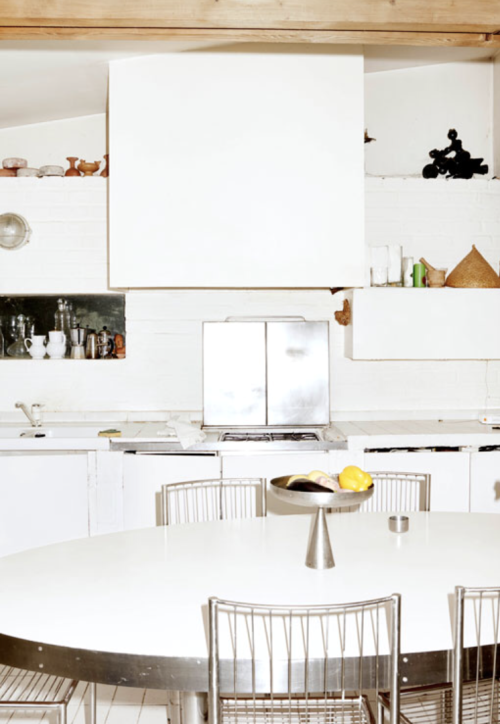
Πηγή εικόνας: communedesign.tumblr.com
Η ανάγκη του, το όραμά του να εντάξει οργανικά τη φύση και κατά συνέπεια τη ζωή μέσα στη δουλειά του, είναι αξιοσημείωτη. Πάνω από όλα, ο Φιλόλαος επιθυμούσε τα έργα του να βρίσκονται στο περιβάλλον ως μέρος του και όχι ως παρέμβαση. Τα site-specific έργα του ακροβατούν μεταξύ γλυπτικής και αρχιτεκτονικής, ενώ πολλές φορές δεν ήταν τίποτα από τα δυο, εντάσσονται ωστόσο στο αστικό ή μη τοπίο με τρόπο τέτοιο, που το μέγεθος δεν απασχολεί καθεαυτό -δεν ενοχλεί, είναι πάντα μελετημένο ακόμα και αν πρόκειται για έργα γιγάντια. Η αρχιτεκτονική και η διακόσμηση ίσως αποτελούν προεκτάσεις του γλυπτικού του έργου, που όμως εξερευνούν όχι μόνο την αισθητική και τη λειτουργικότητα από άποψη συμφραζομένων, αλλά και την πολύ σημαντική έννοια της χρηστικότητας και της βιωσιμότητας του έργου ως πρόθεση και πράξη.
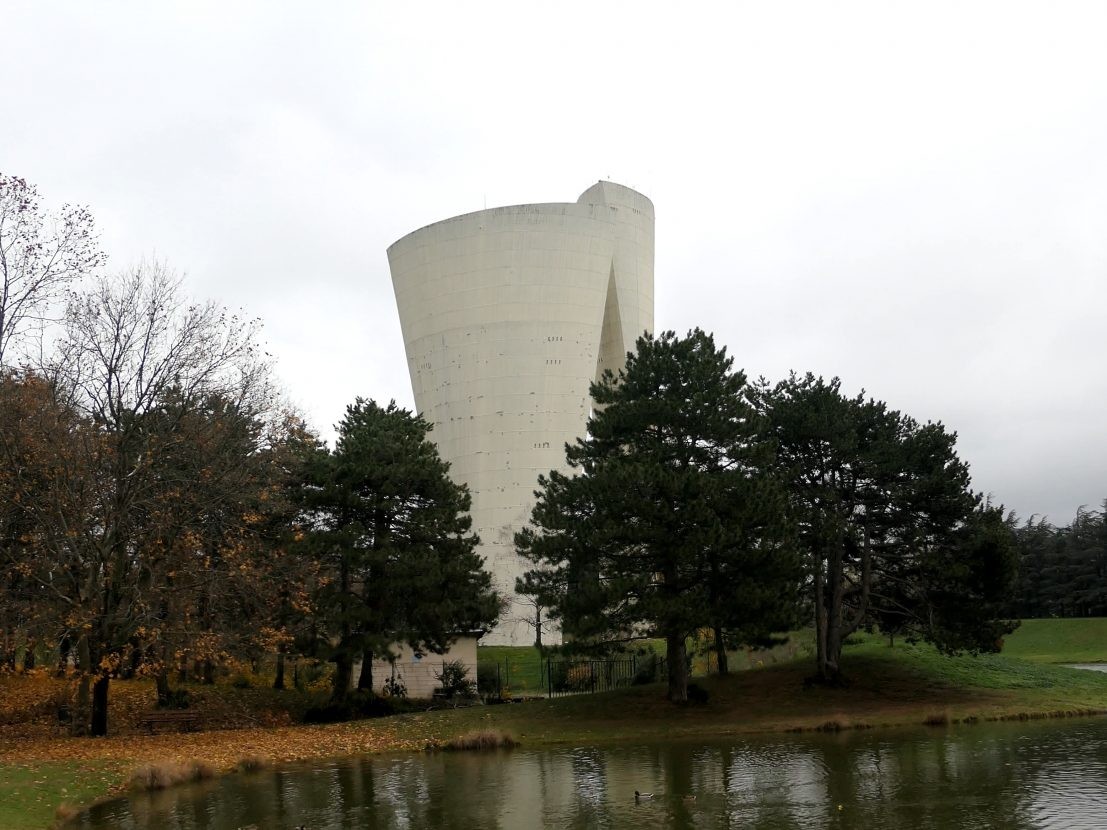
Υδραγωγείο | Πηγή εικόνας: hellenicdiaspora.org
Ερχόμενος σε επαφή με τις δυνατότητες του ανοξείδωτου χάλυβα, δημιουργεί έπιπλα για το σπίτι και το εργαστήριό του, τα οποία θα ήταν ικανά να συνυπάρχουν με τη φθορά της καθημερινής ζωής και της έντονης χρήσης, χωρίς να διαβρώνονται ή να είναι επικίνδυνα για τον χρήστη, ενώ, επίσης, το υλικό αυτό του επέτρεψε να παραγάγει ένα σημαντικό corpus δουλειάς εντός και εκτός κτισμένου χώρου σε όλες τις δυνατές κλίμακες, επικοινωνώντας με το τοπίο.
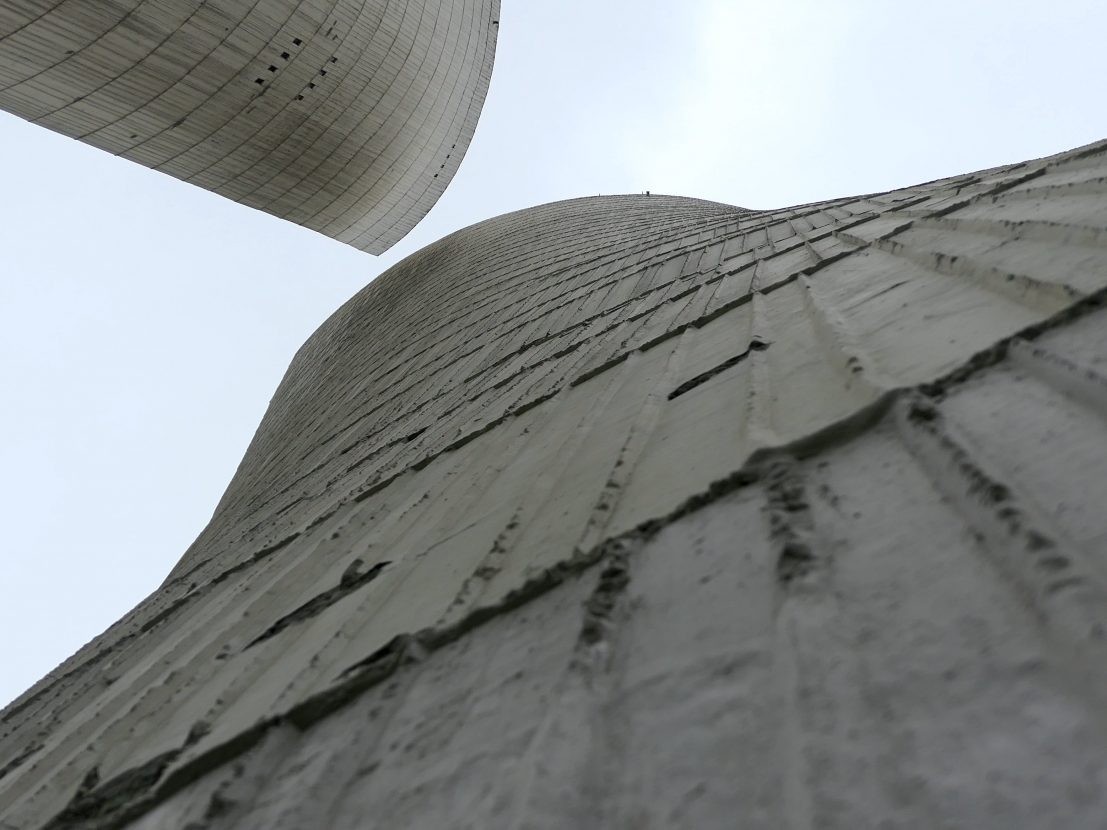
Λεπτομέρεια πλυμένου σκυροδέματος στο Υδραγωγείο | Πηγή εικόνας: hellenicdiaspora.org
Έχοντας ήδη μια καριέρα στη δημόσια (μνημειακή συχνά) γλυπτική, και βρισκόμενος στη διαδικασία κατανόησης ενός ακόμα υλικού -του πλυμένου σκυροδέματος- και της επαφής του με τα μέταλλα, έρχεται και η πιο σημαντική γλυπτική -αλλά αρχιτεκτονικού τύπου- δουλειά του. Η συνάντησή του με τον αρχιτέκτονα André Gomis σηματοδοτεί την αρχή μιας γόνιμης συνεργασίας. Το 1963, ο Γκόμις του εμπιστεύτηκε τη δημιουργία τού Châteaux d'eau de Valence, στο Drôme, δύο πύργων-γλυπτών ύψους 52 και 57 μέτρων, που ολοκληρώθηκαν το 1971. Το έργο παίρνει, 10 ολόκληρα χρόνια μετά, το 1981, το πρώτο βραβείο για το καλύτερο έργο δημόσιας τέχνης για τη δεκαετία 1970-1980, περίοδο που οι γλυπτικές παρεμβάσεις ήταν “ο κανόνας” της σύγχρονης τέχνης.
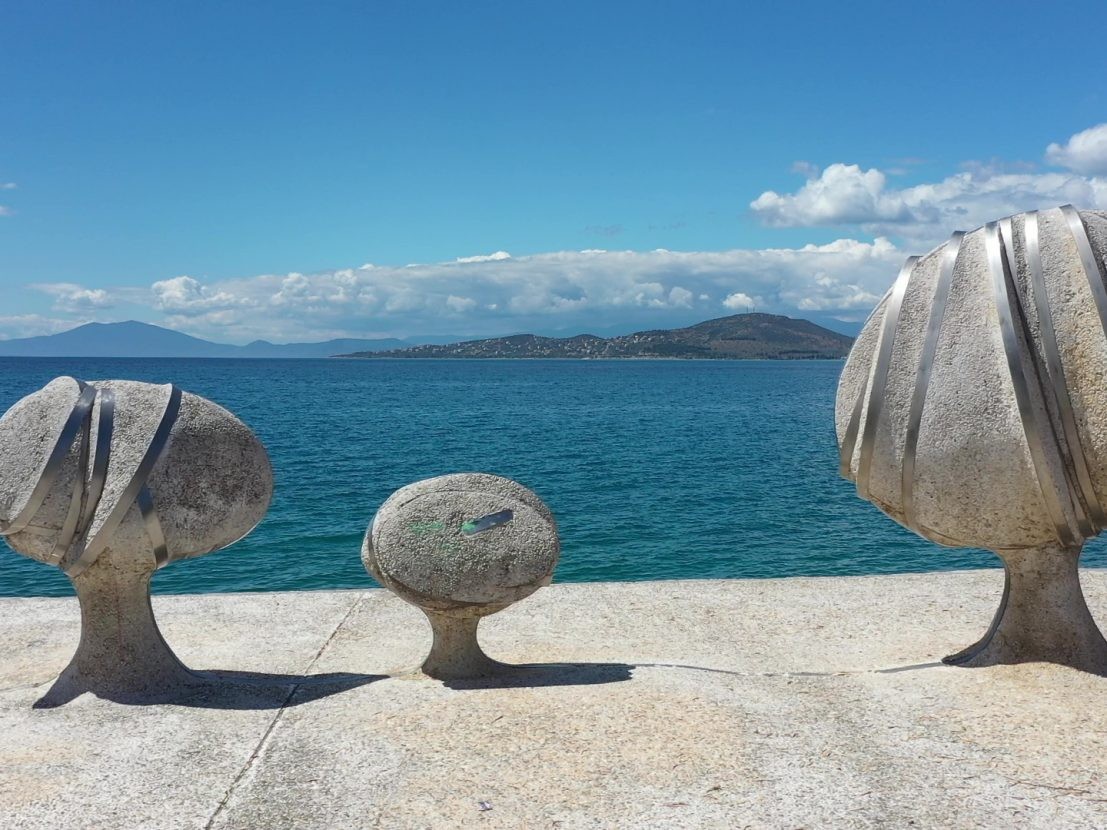
Volos Port | Πηγή εικόνας: hellenicdiaspora.org
Μέχρι σήμερα, λίγοι είναι οι καλλιτέχνες που είχαν μια τόσο ολιστική προσέγγιση στην τέχνη, ως αντικείμενο, ως έννοια, ως φορέα της καθημερινότητας. Ο Φιλόλαος σχεδιάζει έργα συλλεκτικά και μοναδικά για το εσωτερικό του σπιτιού του, παίζοντας με τις υλικότητες και αναζητώντας λύσεις που εξυπηρετούν πρώτα απ’ όλα τον άνθρωπο, και ενώ το κάνει αυτό δεν χάνει ποτέ την ταυτότητά του, εκείνη του μεταλλουργού γλύπτη. Μέσα ακριβώς στις δεκαετίες που γεννιέται ο όρος σύγχρονη δημόσια ή/και τοποειδής γλυπτική, η οποία εμφανίζεται συχνά ως παράλληλο της αρχιτεκτονικής αν όχι ταυτόσημό της (μέσα από επίσημα πολεοδομικά κείμενα και διοικητικές πράξεις), ο Φιλόλαος λειτουργεί ήδη σε αυτά τα πλαίσια έχοντας μια φιλοσοφία που ακολουθεί πιστά με το έργο του. Θέλει να ενταχθεί η τέχνη στην ιδιωτική και δημόσια σφαίρα, στο περιβάλλον (ανοικτό ή κλειστό), με τον όγκο και το υλικό να συνομιλούν στενά. Η διαχείριση του προσωπικού του χώρου με τρόπο τέτοιο ώστε να νοείται ως μια “συλλογή”, ως ένα σύνολο δουλειάς προς χρήση που συγκεντρώνει όλα τα διακριτικά χαρακτηριστικά του δημιουργού του, παραπέμπει άμεσα στο σημερινό συλλεκτικό design.

Πηγή εικόνας: hellenicdiaspora.org
Further Reading:





